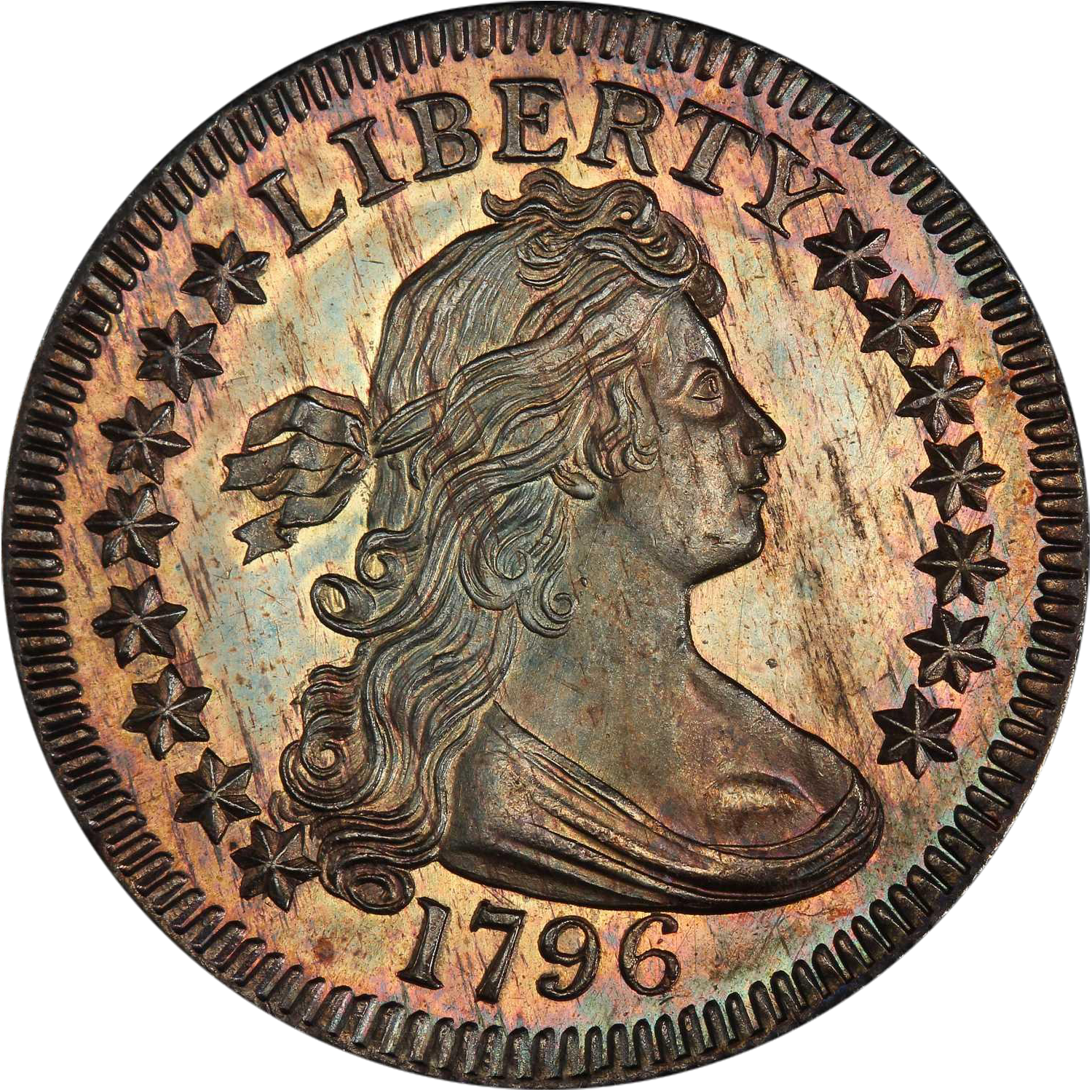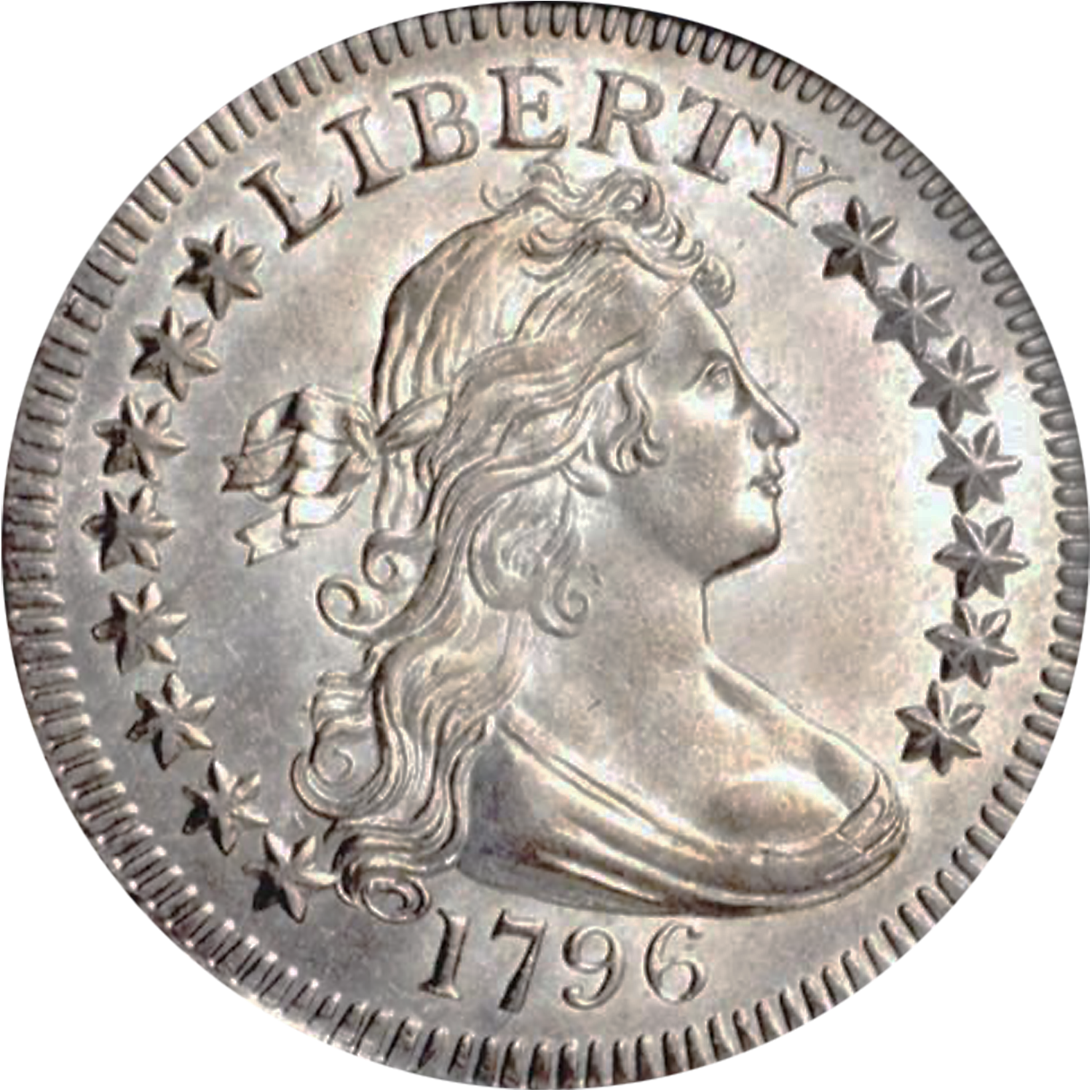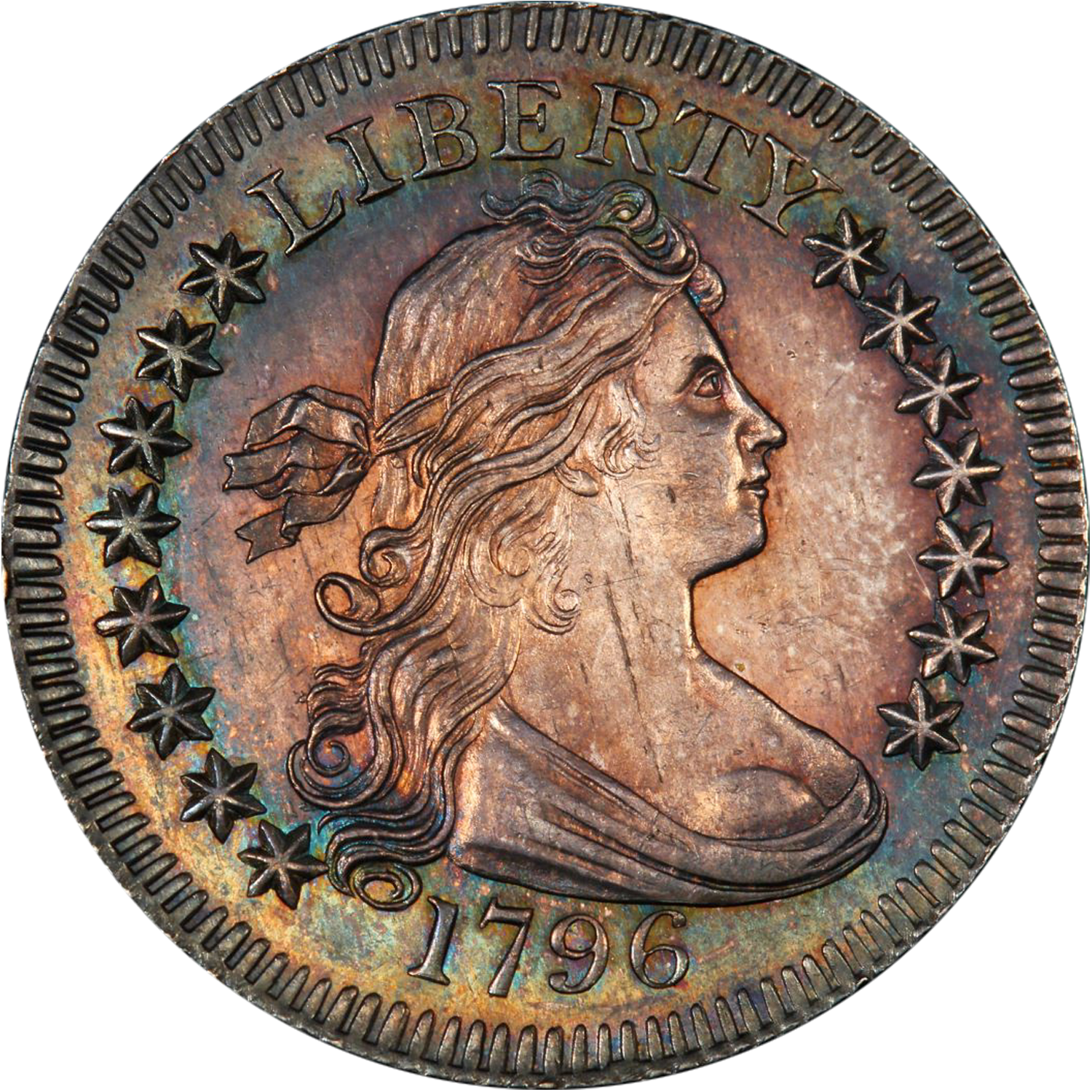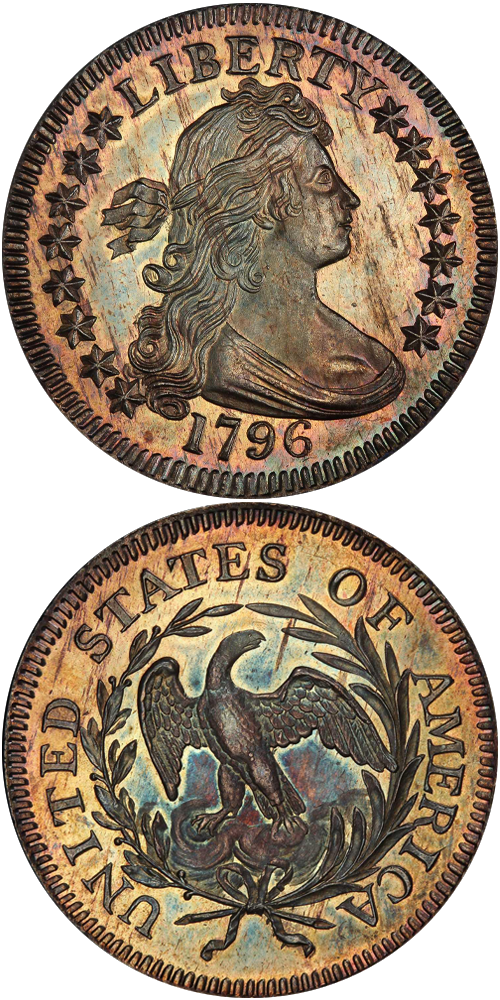1796 Draped Bust Quarter
In the way of background, the quarter dollar denomination is a victory of tradition over consistency, interrupting Jefferson’s decimal plan with a fractional coin of equal value to the most popular circulating silver coin of early America, the Spanish colonial two reales. The famed “two bits,” still ingrained in American memory, was simply too familiar to 18th century Americans to create a new monetary system and not include a piece of similar or equal value. The quarter dollar was not among the initial denominations Jefferson suggested in his 1784 Notes on Coinage. Instead, he preferred a twenty-cent piece, identical to the Spanish pistareen, a commonly encountered coin from mainland Spanish mints that passed at five to a dollar and would have been a better fit into his decimal system. He called it the “double tenth, equal to .2, or 1/5 of a dollar, or to the pistareen.” However, his lesser known but more practical Propositions Respecting the Coinage of Gold, Silver, and Copper of May 1785 suggests a piece of silver of “1/4 or .25” of a dollar’s weight and value. In August 1786, a congressional committee returned to Jefferson’s “double dime” concept in their recommendations on denominations. Alexander Hamilton weighed in on proposed denominations in 1791, though only two silver coins were included among his suggestions, the dollar and the tenth. Nearly a decade after Jefferson had first suggested a quarter dollar, the denomination was made official in the Mint Act of April 2, 1792, which created a quarter dollar that weighed 104 grains of 0.8924 fine silver, for a total fine silver content of 92 and 13/16 grains.
It took the Mint four years to strike a quarter dollar for circulation, though the 1792 “Eagle on Rock” is thought by most numismatists to be a trial for the denomination, despite lacking any inscription relating to value and the fact that surviving specimens are in only the base metals of white metal and copper. The first quarter dollars, struck in 1796, were clearly a sensation, as a significant proportion of the 6,146 minted not only still exist, but survive in a very nice state of preservation. Walter Breen’s undocumented 1988 assertion that Col. E.H.R. Green once owned “a hoard of over 200 Uncirculated 1796 quarter dollars” is unfounded, representing a doubling of Abe Kosoff’s recollection that, decades earlier, he had seen Philadelphia coin dealer James G. Macallister extract “a narrow package about 15 to 18 inches long, wrapped in brown paper” full of 1796 quarters from his coat pocket. Kosoff recollected nearly 40 years later that “all in all I would say there were about 100 pieces, possibly a few more or less,” all high grade.
The 1796 quarter has long been an object of desire for all who form type sets of American coinage. Struck only in this single year, the Draped Bust obverse in combination with the Small Eagle reverse is very rare relative to the demand for it, as no type set can be complete without an example. Survivors are scarce as the mintage was just 6,146 pieces.
The quarter dollar is one of the original denominations authorized for U.S. coinage by the Act of April 2, 1792, along with nine other denominations ranging from the copper half cent to the gold eagle. The Act stipulated that the quarter dollar have a monetary value of 25 cents, a purity in silver of 92-13/16 grains, and conform to a weight standard of 104 grains. The first examples, however, were not produced until 1796, and thereafter no quarters were struck until 1804. As with all early U.S. Mint silver issues, the mintage for the 1796 quarter was based on the request of bullion depositors, who specified the denominations they wanted. The limited production of this denomination during the 1790s, a trend that would continue through the first several decades of the 19th century, is because contemporary bullion depositors requested few quarters from the Mint. Writing in the 2010 book Early Quarter Dollars of the United States Mint, Rory R. Rea, et al theorize that one of the reasons for this may have been the ready availability of the Spanish colonial 2 reales, a silver coin of similar monetary value to the quarter. Flowing into the United States from Mexico, Central and South America, the silver 2 reales was plentiful enough in commercial channels at the time that bullion depositors may have had little need for the domestically offered quarter. The Act of February 21, 1857 would eventually remove the legal tender status of foreign coins in the United States.
The first year 1796 quarter was produced to the extent of just 6,146 pieces using the Draped Bust, Small Eagle design attributed to noted artist Gilbert Stuart and engraved by Robert Scot. This is the only issue of the Small Eagle type; when production of quarters resumed in 1804 the Draped Bust obverse was combined with the Heraldic Eagle reverse. As such, the 1796 is a must-have coin for collectors seeking to complete a type set of United States Mint coinage, which places extreme demand on the limited number of survivors. Even in the lowest circulated grades such as Fair and AG, the 1796 is a perennially strong performer with examples rarely remaining on the open market for long. Mint State survivors are of the utmost rarity and are the province of advanced numismatists.
The example to the left was sold by Stack's Bowers Galleries in the D. Brent Pogue Part I Auction, where it realized $1,527,500.
1796 Draped Bust Quarter Auction Highlights
 PCGS MS-66 Sold for $1,527,500 View Lot 1051 |  PCGS MS-65 Sold for $230,000 View Lot 46 |  PCGS MS-63 Sold for $172,500 View Lot 2676 |






